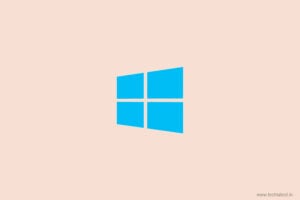
The Windows 10 license isn’t free whether you are a home client or an enterprise client, there is a cost to pay. This is the reason many people need to transfer Windows 10 license to a new PC or hard drive. There can be numerous explanations for this. Your old hard drive got corrupted. You purchased another PC. To muddle things, Microsoft sells its permit by means of various channels like OEM permit utilized by producers who sell a pre-installed licensed copy of Windows with their workstations, retailers like Amazon, academic foundations with student licensing, and volume licensing. Know how to Transfer Windows 10 License To New PC, Hard Drive, or SSD using these steps.

Step to Transfer Windows 10 License to New PC, Hard Drive, or SSD
Step 1: Know Which License is Transferable
We know that Microsoft likes to complicate things. They also like to sell their licenses through different retailers and mediums and in different flavours.
- You can transfer Windows 10 license only once if it was upgraded from a retail version of Windows 8.1 or before
- Windows retail license bought directly from open market channels like eCommerce sites can be transferred as many times as you want.
- OEM Windows 10 licenses, the ones that come pre-installed on your laptop when you bought it, are non-transferable
- If you have used Easy Upgrade, you can transfer Windows 10 license through Digital Licensing
Step 2: Remove Windows 10 License
Remove your Windows 10 license from the current PC. To do so, press Windows key+X keys to show a hidden menu and click on Command Prompt or PowerShell with Admin written in the brackets.
Now type the below command and hit enter.
NOTE: This will remove the Windows 10 license (product key) from your computer. Make sure you have the product or license key written somewhere safe before doing this step.
slmgr.vbs /upk
If you don’t have access to the license key, type one of the below commands to find it. Use the following guide to find: 3+ Methods to Find Your Windows 10 Product Key Instantly
Note that these commands may or may not work on every PC, but they are worth a try. You can also find your license or product key in the welcome email or sticker on the back of the Windows installation CD that you bought. Once you have the keys, use the above command to remove the Windows license from your PC.
Step 3: Install Windows 10
This method will work on both HDD as well as SSD, so you don’t have to worry about that part at least. We will be doing a fresh and clean Windows 10 install here, however, you can use this method to upgrade your Windows version to version 10 also.
- Download the Media Creation Tool first. Visit the official Microsoft web page to download it instead of using a 3rd party site to be safe.
- You can either create an installation media on a pen drive or DVD or create an ISO image or you can use this to upgrade an existing version of unregistered Windows 10 on a PC also.
We don’t recommend users to continue with an unregistered or cracked version of Windows. You will not receive critical Windows updates that fixes numerous bugs and vulnerabilities that are often found stealing your data.
- I will use a pen drive here for the sake of simplicity, but you can go with any. You will need at least a 16GB blank pen drive, though Microsoft suggests 8GB. Run the downloaded media installation file and accept the licensing terms now.
- On the next screen, select Create installation media. If you are doing this on a PC that already has a version of Windows and you need to upgrade it to Windows 10, select Upgrade this PC now.
- On the next screen, your default language, Windows edition which should be 10 and architecture will already be selected for you based on the PC you are using, however, you can uncheck the recommended options to choose a different setting manually.
- You will now select either a USB drive or an ISO file. I always go with a USB drive because I prefer pen drives. They are easy to use.
- In the next screen, you will choose your USB drive’s letter if it is not automatically detected or if there are more than two USB drives attached.
- Click on Next and make sure that your PC is connected to a power source.
Now simply reboot the PC on which you want to install Windows 10, but you will reboot from the pen drive instead of the hard drive. Here is an in-depth guide on how to boot from the USB no matter the make and model of your computer.
- Once you have rebooted your PC from the USB, or CD if you have created the installation media on that, on the PC you want to install Windows 10.
- Select your installation language, time zone, and keyboard input based on your location and preferences. Click on Next.
- Click on Install on this screen to begin the Windows 10 installation process. This will take time so again, make sure you are connected to a power source. If your computer shuts down due to lack of power during the installation process, it can corrupt the files and you don’t want that.
- Once the installation is complete, you will be asked to enter the key. Do it.
- You may have to select the Windows edition at this stage. Do you have a Windows Home or Pro license? Make sure to choose the correct edition to continue the installation process, otherwise, the activation will fail and you will have to begin again.
- This will lead you to the Setup screen where the files will begin to transfer. You will have to accept the license terms and conditions to continue.
Now comes another important part. You will see two options here. Upgrade or Custom. If you are doing a fresh install of Windows 10 on a new computer, then choose Custom. If you are upgrading from a previous version of Windows (8.1 or earlier), then you will choose Upgrade here which will keep the previous files and apps intact.
Do you have more than one partition on your hard drive? If yes, then you will be asked to choose a partition to install Windows 10. Most people choose C Drive, but you can choose any. Don’t choose the pen drive! Note that there are many free tools available in the market that will help you manage or even change drive partitions and allocate different space to them easily.
Just click on Apply and OK and continue ahead. Setup will take time after which the PC will reboot, and you should see your Windows 10 activated on the new PC now. And finally, the transfer windows 10 license is successful.
Directly in Your Inbox




![[Solved] Windows Update Error Code 0xc1900223 Windows 10 Update Featured](https://tech-latest.com/wp-content/uploads/2021/12/Windows-10-Update-Featured-300x225.jpeg)




